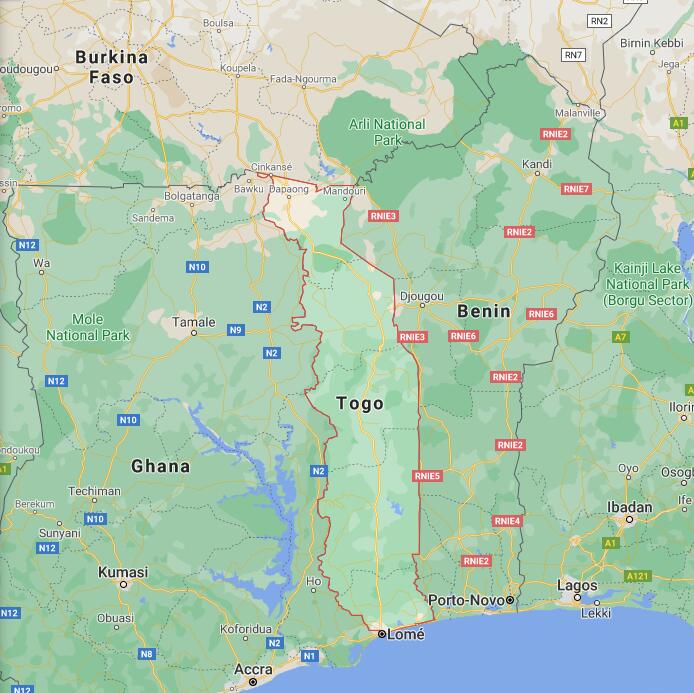
In 2003, Togo was located in the West Africa region of Africa. It had a population of around 5.5 million people and its economy was largely driven by agriculture, tourism, and phosphate mining. The country maintained a constitutional democracy with an emphasis on civil liberties and social welfare. According to computergees, Togo maintained strong diplomatic ties with other West African nations such as Ghana and Benin while it also had close relations with the United States. In 2003, tourism to the country was beginning to grow as visitors were drawn to its vibrant cities, unique culture, and diverse landscape. The country offered numerous attractions such as Fosse aux Lions which showcased the unique history of the region, Kpalimé National Park which provided opportunities for wildlife viewing, Mount Agou which offered stunning views of natural beauty, and Lake Togo which protected native plants and animals. Additionally, there were many opportunities for outdoor activities such as exploring Lomé or visiting Atakpamé which is home to vibrant street art scenes.
Yearbook 2003
Togo. According to Countryaah.com, Togo Independence Day is April 27. Nestorn among African heads of state, Gnassingbé Eyadéma, was re-elected in June once again as Togo’s president, 36 years after he took power in a military coup. Eyadéma received about 57% of the vote since the only dangerous challenger, Gilchrist Olympio, had refused to stand. According to Togo’s electoral law of 2002, a presidential candidate must have lived in the country continuously for the last twelve months before an election. Olympio returned in April after four years in Ghana, where, according to his own statement, he lived to avoid being murdered in his home country. The European Union refrained from sending election observers since the government did not want to let in the observer group which would have come several weeks in advance to review the preparations.
The opposition claimed that the president’s victory was based on cheating, but observers from the African Union believed the election was largely a fair one. After the election, Eyadéma formed a “unity government” which, however, was boycotted by most opposition parties. The President made his son Faure Essozimna Gnassingbé Minister of Infrastructure, Mining Industry, Energy and Postal and Telecommunications.
Republic of Togo Brief Guide
According to AbbreviationFinder, Togo is a state in West Africa. Its neighbors are Ghana in the west, Benin in the east and Burkina Faso in the north. To the south, it borders the Gulf of Guinea, on the coast of which is the capital Lomé.
The country’s economy is based on agriculture: coffee, cocoa and cotton are its cornerstones. The location along trade routes has made foreign trade and brokerage important for centuries. The country’s borders are drawn by colonial hosts, and within it, tribal conflicts have frozen into confrontation between the South and the North.
Climate
The area has a warm, humid and tropical climate. The coast varies between rainy season and dry season. During the dry season, Harmatta blows, a constant wind from the north, which brings with it the red sand of the Sahara. Sand reduces the power of the sun and thus cools it. In October-March, temperatures remain between 27 and 30 ºC and at night around 20–24 ºC.
Travel
Seasons The best time to travel is from October to February when there is a drier season and the temperature stays around 25 degrees.
Food & beverage
Drinking tap water is not recommended. All water and beverages must be industrially bottled. Salads and vegetables should also be rinsed with bottled water. Heated or tablet-purified water can be drunk. The food should be heated or cooked. Reheated foods and seafood should be avoided.
Security
Togo is a safe country, but normal caution should be exercised. Coastal shores are not safe to swim due to strong currents.
Economic conditions
After the promising signs of economic progress of the mid-1980s, Togo experienced a profound economic crisis in the 1990s, largely due to the deterioration of the political situation. Economic activities were also negatively affected by the freezing of international aid due to the lack of respect for human rights. Agriculture, practiced by 65% of the active population (2009), on just under half of the country’s surface, is the leading sector; the production is destined both for self-consumption (corn, millet, rice, cassava) and for export (cocoa, coffee and cotton). The forestry resources, depleted by the exploitation of the colonial years, and zootechnical resources are modest. Among the resources of the subsoil, phosphates are of considerable importance, of which the country it is rich, even if production declined in the early 21st century. due to the increased mining costs. Iron, manganese and chromite are also extracted. Modern industry is underdeveloped: there are food, textile, chemical and cement factories. Oil refinery at the port of Lomé. The Togo lacks energy resources, but uses the hydroelectric power plant on the Mono river (built in cooperation with Benin) and some thermal power stations for the production of electricity. Foreign exchanges show a constant passive and are subject to fluctuations in international prices, especially for phosphates. Main export partners are Ghana, Burkina Faso, India and Germany ; for imports, China, the Netherlands, France and Thailand. ● The communication infrastructures are relatively developed (7520 km of roads, one third of which are paved; 532 km of railways), with a main axis that runs through the whole territory in the SN direction, up to Burkina Faso. Important industrial port in Lomé, with an expanding freight traffic.